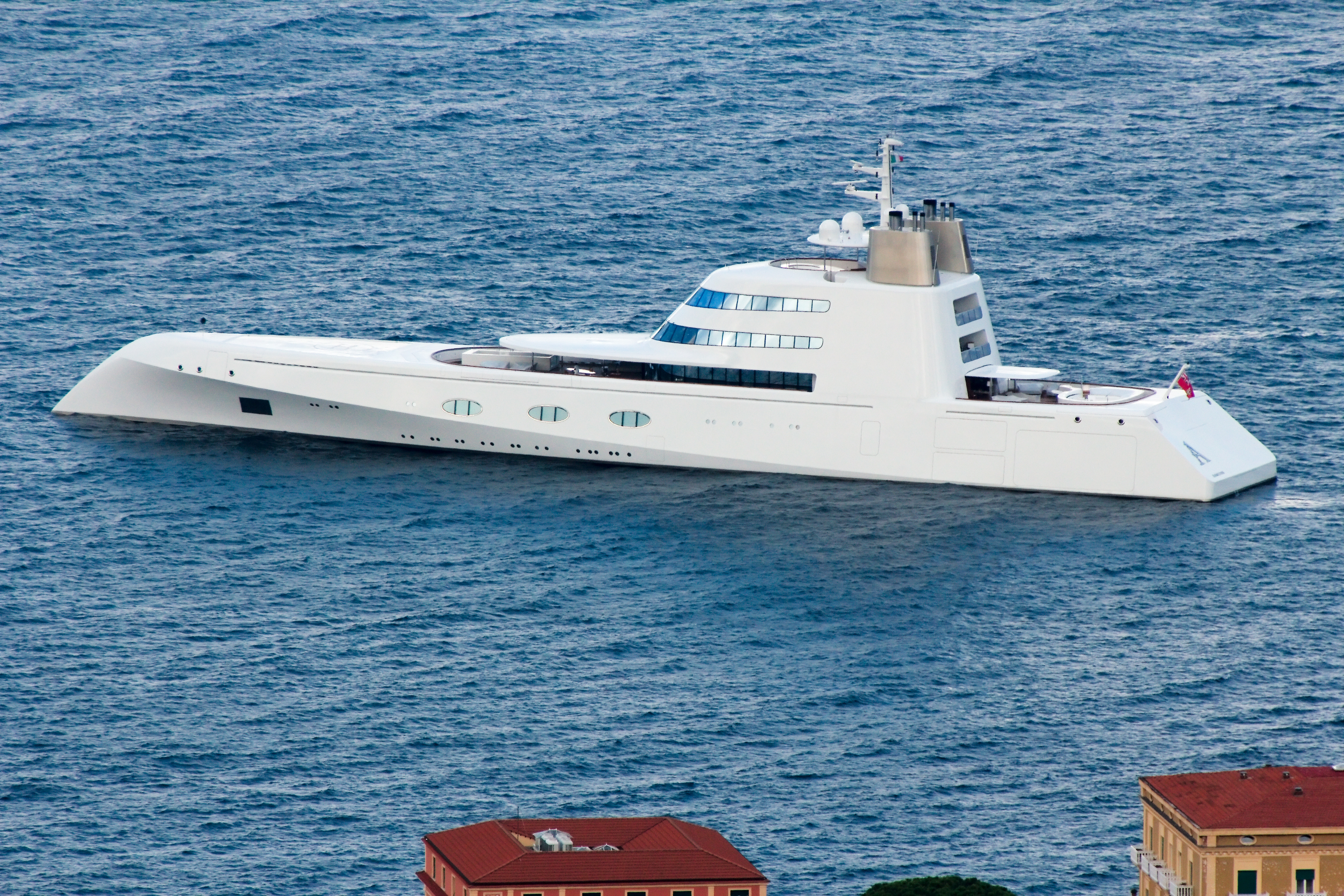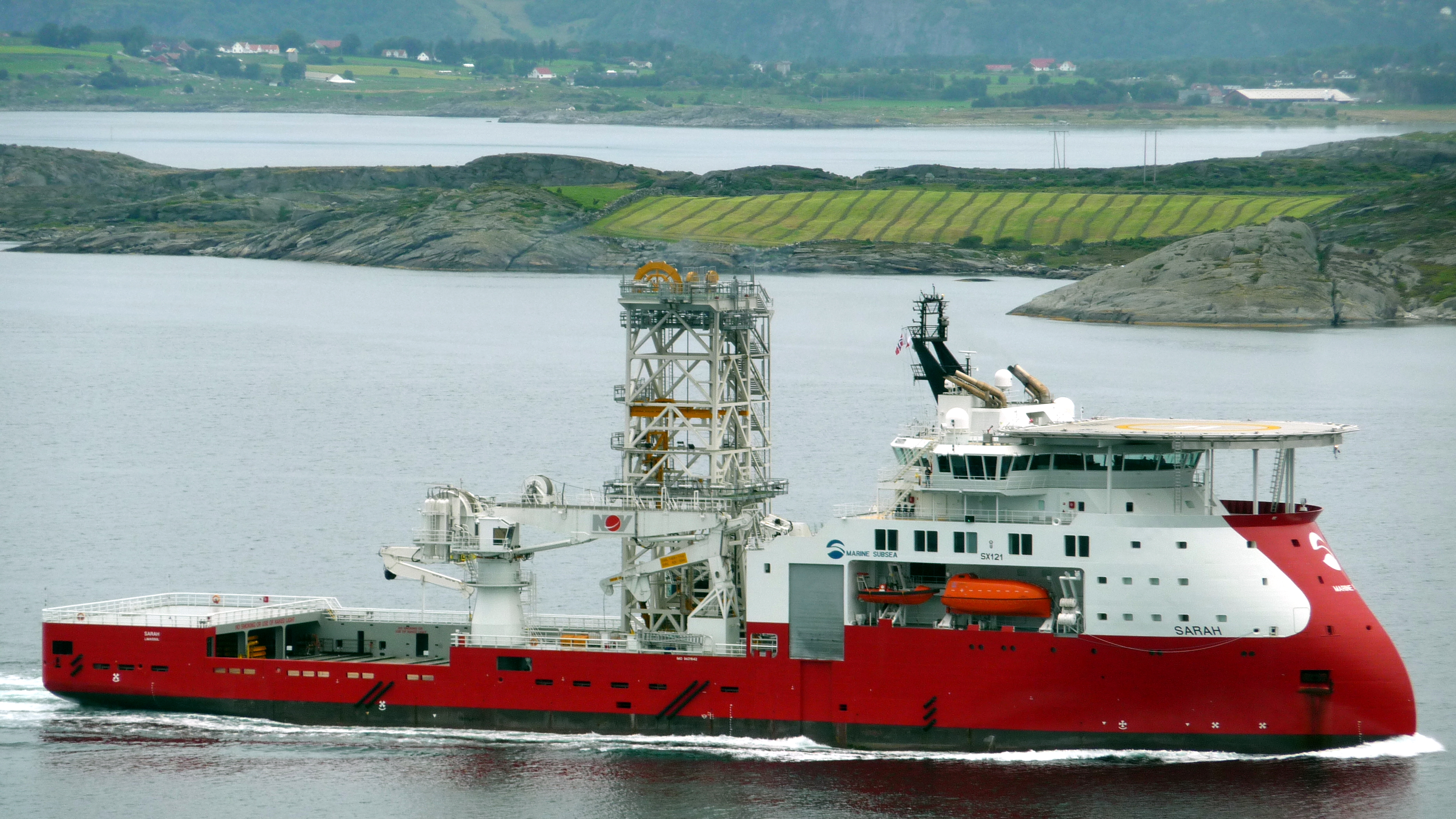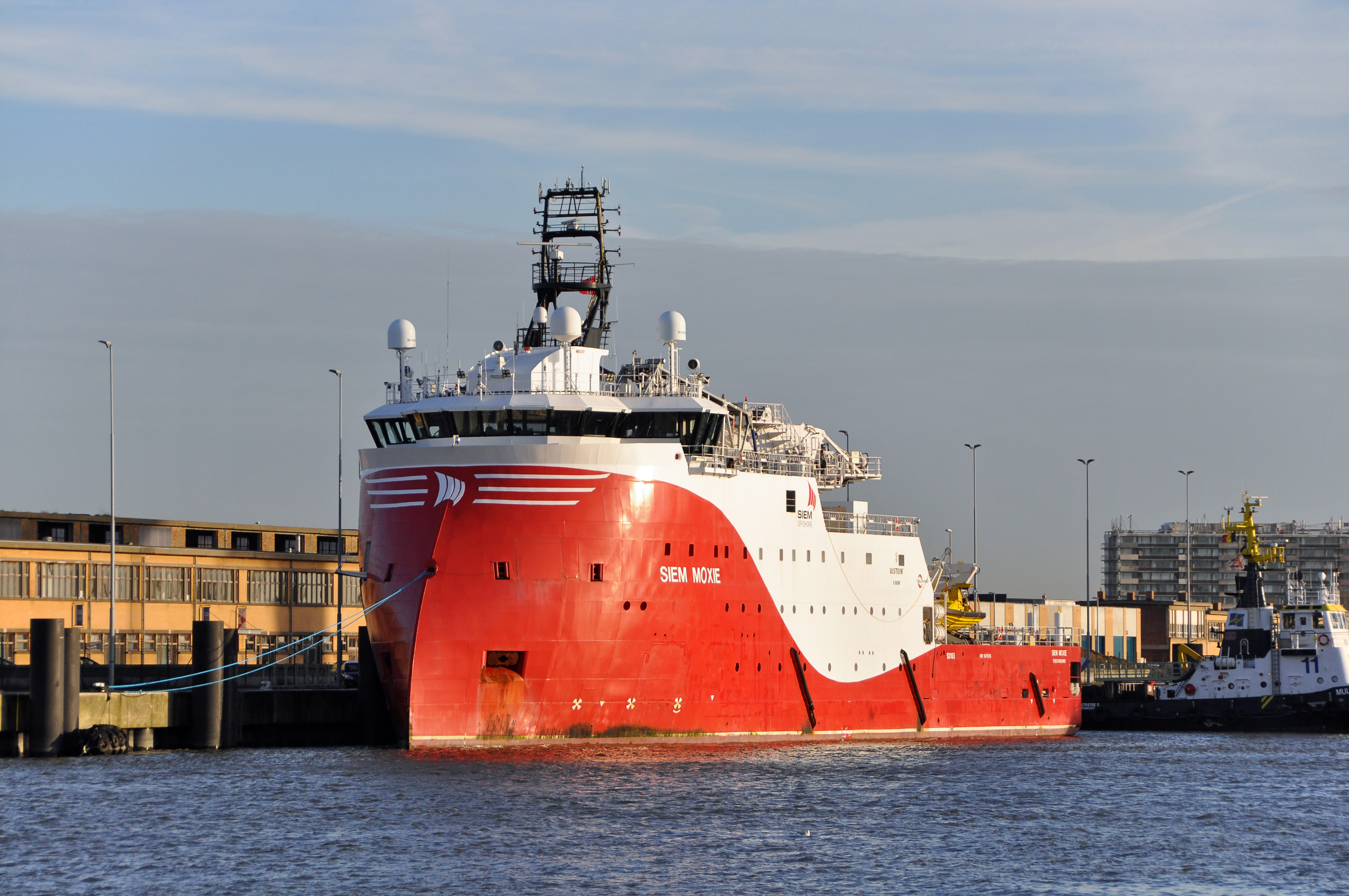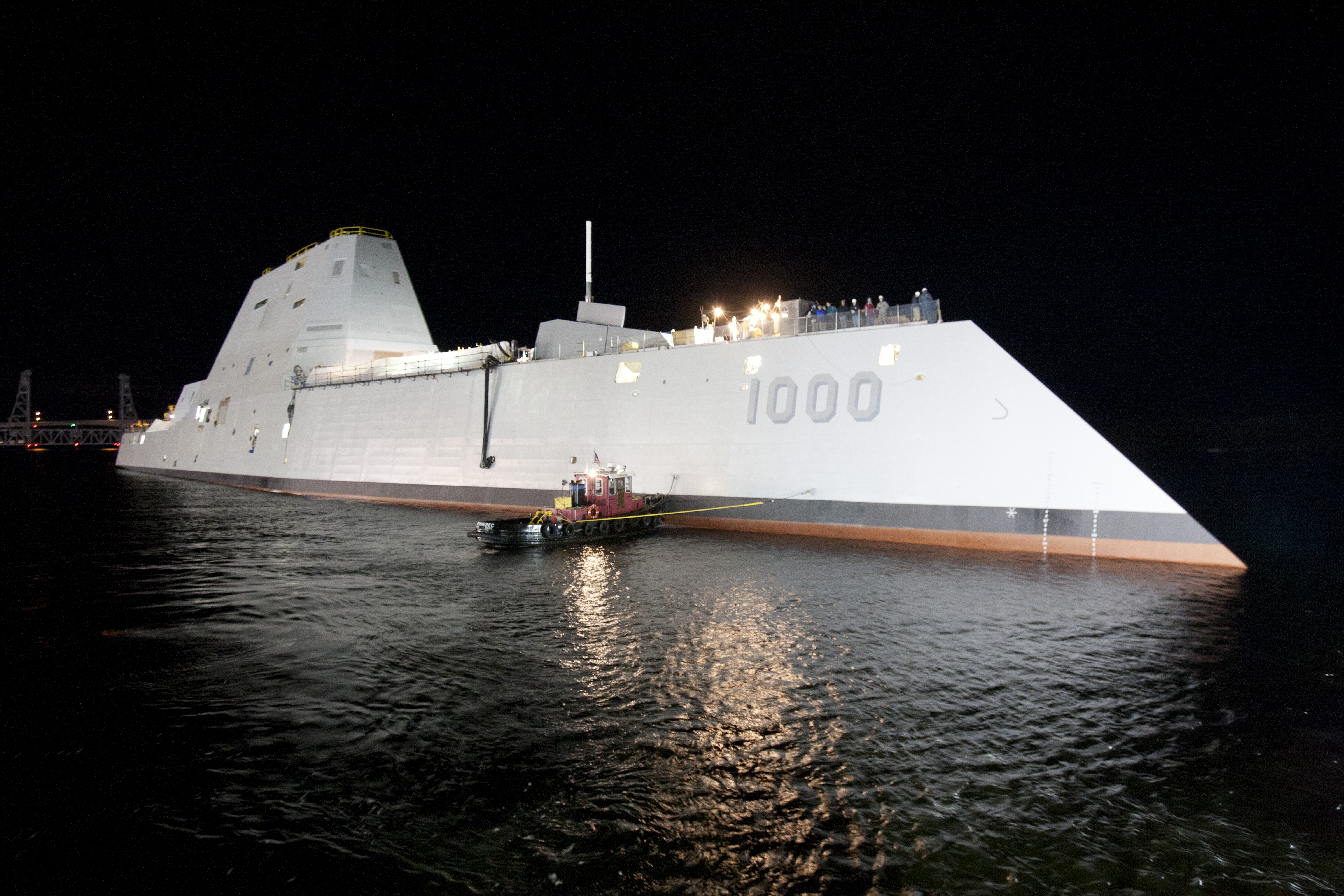X-bow (shipbuilding) on:
[Wikipedia]
[Google]
[Amazon]





 In ship design, an inverted bow (occasionally also referred to as ''reverse bow'') is a ship's or large boat's bow whose farthest forward point is not at the top. The result may somewhat resemble a
In ship design, an inverted bow (occasionally also referred to as ''reverse bow'') is a ship's or large boat's bow whose farthest forward point is not at the top. The result may somewhat resemble a
Bourbon Orca
', design AX104, is an Ulstein A-Series
Ulstein delivers second wind service vessel
X-BOWUlstein GroupUlstein Group History bookpdf 'Bourbon Orca'
{{DEFAULTSORT:X-Bow (Shipbuilding) Shipbuilding



 In ship design, an inverted bow (occasionally also referred to as ''reverse bow'') is a ship's or large boat's bow whose farthest forward point is not at the top. The result may somewhat resemble a
In ship design, an inverted bow (occasionally also referred to as ''reverse bow'') is a ship's or large boat's bow whose farthest forward point is not at the top. The result may somewhat resemble a submarine
A submarine (or sub) is a watercraft capable of independent operation underwater. It differs from a submersible, which has more limited underwater capability. The term is also sometimes used historically or colloquially to refer to remotely op ...
's bow. Inverted bows maximize the length of waterline and hence the hull speed
Hull speed or displacement speed is the speed at which the wavelength of a vessel's bow wave is equal to the waterline length of the vessel. As boat speed increases from rest, the wavelength of the bow wave increases, and usually its crest-to-tro ...
, and have often better hydrodynamic drag
In fluid dynamics, drag (sometimes called air resistance, a type of friction, or fluid resistance, another type of friction or fluid friction) is a force acting opposite to the relative motion of any object moving with respect to a surrounding flu ...
than ordinary bows. On the other hand, they have very little reserve buoyancy
Buoyancy (), or upthrust, is an upward force exerted by a fluid that opposes the weight of a partially or fully immersed object. In a column of fluid, pressure increases with depth as a result of the weight of the overlying fluid. Thus the p ...
and tend to dive under waves instead of piercing or going over them.
Inverted bows were popular on battleships and large cruisers in the early 20th century. They fell out of favour, as they were very wet at high speeds and in heavy seas, but have made a comeback on modern ship design.
Examples
Motor Yacht "A"
The 390 ftluxury motor yacht
A superyacht or megayacht is a large and luxurious pleasure vessel. There are no official or agreed upon definitions for such yachts, but these terms are regularly used to describe professionally crewed motor or sailing yachts, ranging from to ...
M/Y "A" has an inverted bow, along with a tumblehome
Tumblehome is a term describing a hull which grows narrower above the waterline than its beam. The opposite of tumblehome is flare.
A small amount of tumblehome is normal in many naval architecture designs in order to allow any small projection ...
hull design.
Ulstein X-Bow
The Ulstein X-Bow (or just X-BOW) is an inverted ship's bow designed byUlstein Group
Ulstein Group is a group of companies that focus on various marine-related industries, but is mainly known for its shipbuilding and ship design activities. The largest unit is ''Ulstein Verft AS''.
The company's head office and primary operations ...
to improve handling in rough seas, and to lower fuel consumption by causing less hydrodynamic drag
In fluid dynamics, drag (sometimes called air resistance, a type of friction, or fluid resistance, another type of friction or fluid friction) is a force acting opposite to the relative motion of any object moving with respect to a surrounding flu ...
. It is shaped somewhat like a submarine
A submarine (or sub) is a watercraft capable of independent operation underwater. It differs from a submersible, which has more limited underwater capability. The term is also sometimes used historically or colloquially to refer to remotely op ...
's bow.
The MV Bourbon Orca
', design AX104, is an Ulstein A-Series
anchor handling tug supply vessel
Anchor Handling Tug Supply (AHTS) vessels are mainly built to handle anchors for oil rigs, tow them to location, and use them to secure the rigs in place. AHTS vessels sometimes also serve as Emergency Response and Rescue Vessels (ERRVs) and a ...
(AHTS) built for Bourbon Offshore Norway, the Norwegian division of the French Groupe Bourbon, and was the first ship built with the Ulstein X-bow in 2006. She was awarded Ship of the Year 2006, both by Skipsrevyen and Offshore Support Journal. In 2007, the Bourbon Orca design model was included in the London Science Museum's display of innovative technology. The vessel's operator claims that the design achieves higher speed and a calmer motion in head, rough seas. Originally developed for offshore oil and gas vessels, the design has entered new segments such as yachts, cruise vessels, offshore wind and fisheries. In 2017, a US cruise company ordered the first four X-BOW cruise ships for arctic ice conditions, and Lindblad Expeditions also ordered two such expedition cruise vessels.
The number of X-BOW vessels contracted and or delivered reached the 100 mark in 2017. Later developments from the X-BOW are the X-STERN and TWIN X-STERN hull line designs.
Zumwalt-class destroyer
The bow of the stealth guided missile destroyer for theUnited States Navy
The United States Navy (USN) is the maritime service branch of the United States Armed Forces and one of the eight uniformed services of the United States. It is the largest and most powerful navy in the world, with the estimated tonnage ...
is also inverted. It has a wave-piercing tumblehome
Tumblehome is a term describing a hull which grows narrower above the waterline than its beam. The opposite of tumblehome is flare.
A small amount of tumblehome is normal in many naval architecture designs in order to allow any small projection ...
hull form whose sides slope inward above the waterline.
See also
* * *References
Ulstein delivers second wind service vessel
External links
X-BOW
{{DEFAULTSORT:X-Bow (Shipbuilding) Shipbuilding